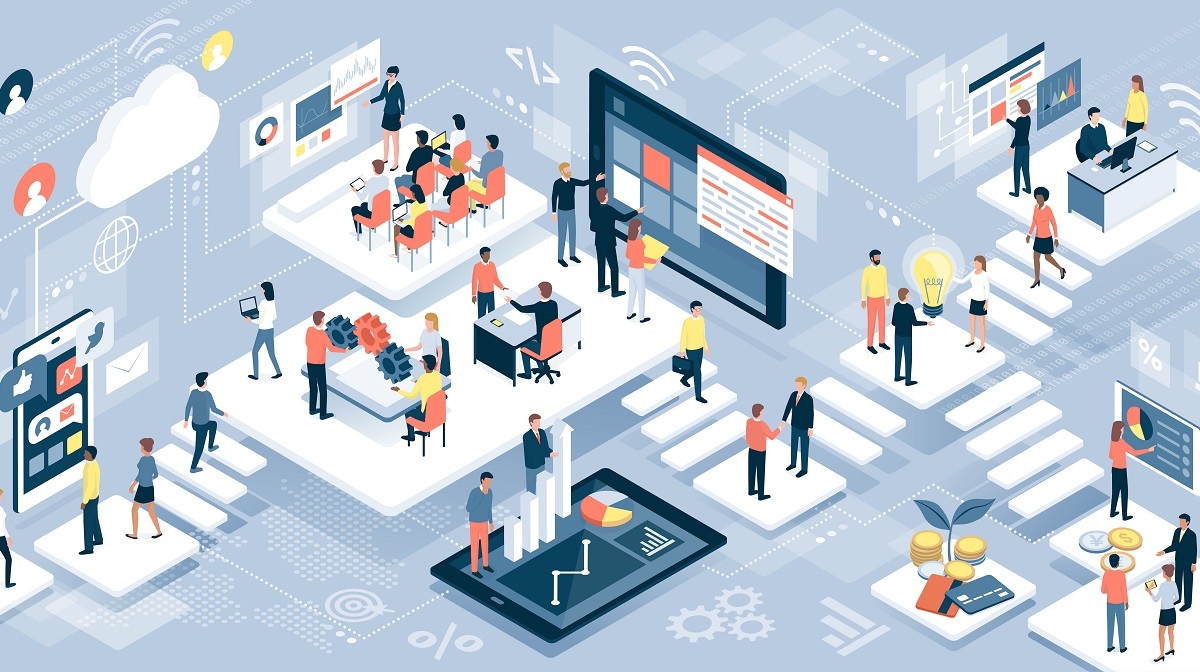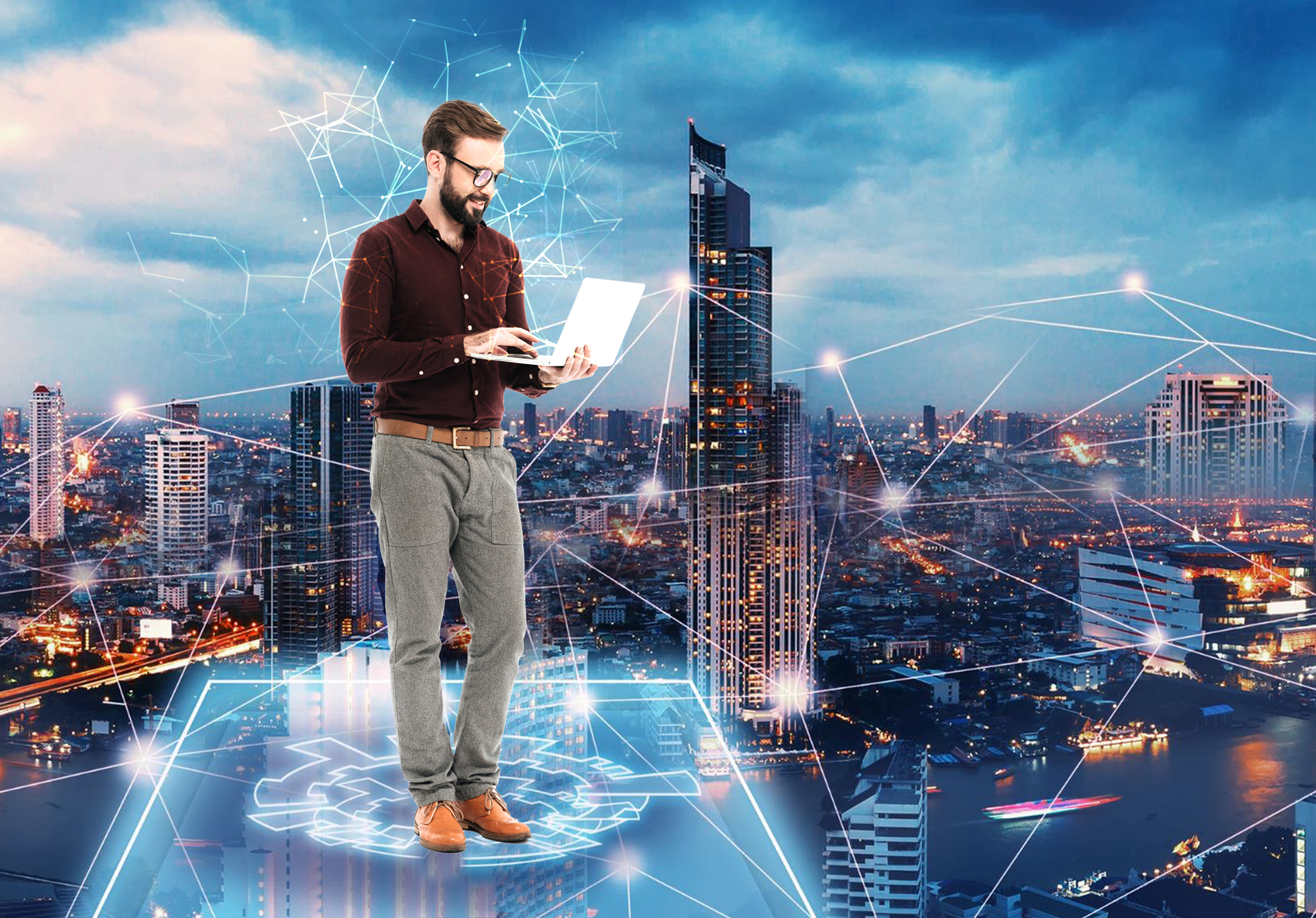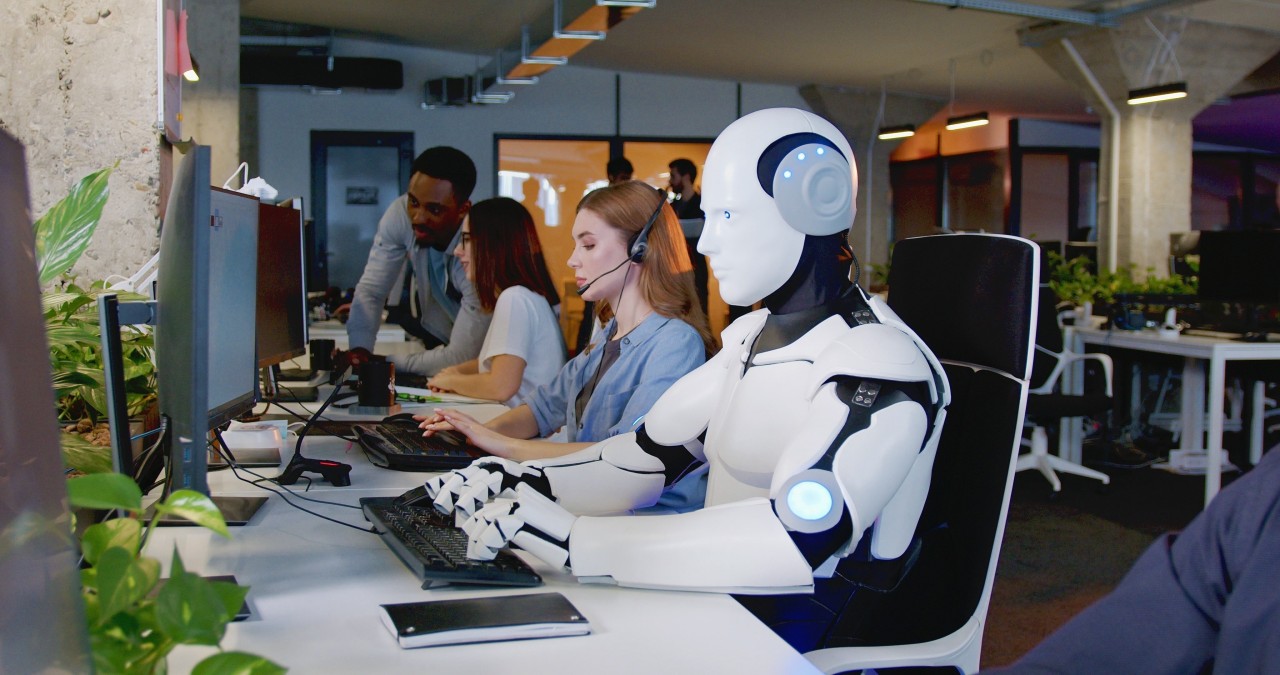Technology Driving the Future of Work: How Innovation is Shaping the Modern Workforce
In today’s rapidly evolving world, technology is transforming every facet of our lives, and the workplace is no exception. From AI-powered automation to cloud collaboration tools, technological advancements are reshaping the way we work, interact, and engage with our careers. The future of work is not just about remote work or hybrid models, but about how innovative technologies are enabling more efficient, flexible, and connected work environments. This article explores the key technologies driving the future of work and how organizations can leverage them for success.

Technological innovations are changing the workplace by enabling smarter workflows, greater flexibility, and more productive environments.
1. The Rise of Artificial Intelligence and Automation
One of the most significant drivers of change in the workplace is the rise of artificial intelligence (AI) and automation. These technologies are transforming the way businesses operate by streamlining repetitive tasks, improving decision-making, and enhancing overall productivity. In fact, automation is expected to continue growing, with many routine administrative functions being replaced by AI tools.
Key Benefits of AI in the Workplace:
- Increased Efficiency: AI can handle mundane, repetitive tasks such as data entry, customer service inquiries, and scheduling, freeing up employees for more strategic work.
- Enhanced Decision-Making: AI algorithms can analyze vast amounts of data, offering insights that help managers make data-driven decisions.
- Improved Personalization: AI-powered tools can help businesses deliver personalized customer experiences by tailoring services or content to individual preferences.
- Cost Savings: By automating routine tasks, organizations can reduce labor costs and improve efficiency.
Real-World Applications:
- Chatbots: Many companies use AI-powered chatbots to handle customer inquiries, allowing for 24/7 support and faster response times.
- Robotic Process Automation (RPA): This technology automates repetitive tasks like invoice processing, reducing the need for manual intervention.

AI and automation are transforming workplace efficiency by streamlining tasks and enabling smarter workflows.
2. Remote Work Tools and Cloud Collaboration
The COVID-19 pandemic accelerated the adoption of remote work, but it also highlighted the need for more effective tools to facilitate virtual collaboration. Cloud-based platforms such as Zoom, Slack, Microsoft Teams, and Google Workspace have become integral to the modern workforce, enabling employees to collaborate, communicate, and share files seamlessly from anywhere.
Benefits of Cloud Collaboration:
- Access Anywhere, Anytime: Cloud tools allow employees to work from any location, making it easier for remote or hybrid teams to stay connected.
- Real-Time Collaboration: Team members can edit documents, share information, and collaborate in real-time, improving efficiency.
- Cost Savings: Cloud storage eliminates the need for physical storage solutions and offers businesses scalable resources.
- Security: Cloud-based platforms often have robust security measures, including encryption and multi-factor authentication, to protect sensitive data.
3. Flexible Work Arrangements Supported by Technology
Hybrid work has become one of the most popular models post-pandemic. It allows employees to work both remotely and in the office, creating a flexible environment that accommodates different working styles. Technology plays a critical role in supporting this shift, ensuring seamless collaboration between remote and in-office teams.
Technology Enabling Hybrid Work:
- Video Conferencing Platforms: Tools like Zoom, Google Meet, and Microsoft Teams make it possible for teams to hold meetings and collaborate face-to-face virtually, regardless of location.
- Virtual Whiteboards and Collaboration Spaces: Tools such as Miro and Mural allow teams to brainstorm and collaborate on projects as if they were in the same room.
- Task Management Tools: Platforms like Asana, Trello, and Monday.com help teams track project progress, assign tasks, and manage deadlines in real-time.

Technological tools for remote and hybrid work arrangements ensure that teams can collaborate effectively from anywhere.
4. The Role of Data Analytics in Shaping Workplaces
Data analytics is rapidly becoming one of the most important tools for organizations looking to optimize their workforce. By collecting and analyzing data on employee performance, customer behavior, and operational efficiency, businesses can make informed decisions that enhance productivity and engagement.
Applications of Data Analytics in the Workplace:
- Employee Performance: HR teams can use data to track employee performance, identify skill gaps, and tailor professional development programs.
- Workforce Planning: Data-driven insights allow businesses to plan staffing needs, predict turnover, and improve recruitment strategies.
- Customer Insights: Data analytics tools help businesses understand customer behavior, preferences, and pain points, allowing for more personalized marketing strategies.
5. The Internet of Things (IoT) and Smart Workspaces
The Internet of Things (IoT) refers to the network of interconnected devices that communicate and share data with one another. In the workplace, IoT devices can help organizations create smarter, more efficient environments. Smart offices use IoT technology to improve energy efficiency, manage resources, and enhance employee comfort.
IoT in the Workplace:
- Smart Lighting: IoT-powered lighting systems adjust automatically based on occupancy and time of day, reducing energy consumption.
- Smart Desks and Workstations: These devices can monitor employee activity, provide ergonomic feedback, and even adjust to optimal working conditions.
- Resource Management: IoT sensors can track office supplies, inventory, and equipment usage, ensuring that resources are allocated efficiently.
6. Cybersecurity and Data Privacy
As the workplace becomes more digital, cybersecurity and data privacy have become paramount. With employees accessing sensitive company data remotely, it is crucial to implement robust security measures to protect against cyber threats.
Key Technologies for Enhanced Security:
- Multi-Factor Authentication (MFA): MFA adds an extra layer of security by requiring users to provide two or more verification factors before gaining access to systems.
- End-to-End Encryption: This technology ensures that data is encrypted before it is transmitted, making it unreadable to unauthorized users.
- Virtual Private Networks (VPNs): VPNs help employees securely access company networks from remote locations.
7. The Future of Work: Embracing New Technologies
The future of work is inextricably linked to the ongoing advancements in technology. As businesses adapt to new tools, models, and systems, they must remain agile and open to innovation. Whether it’s leveraging AI, embracing cloud-based collaboration, or enhancing workplace security, technology will continue to drive the evolution of work in the coming years.
What to Expect:
- More Personalized Work Environments: Technologies such as AI and IoT will allow workplaces to become more personalized and adaptive to employee needs.
- Further Automation: Automation will expand beyond simple tasks and take on more complex roles, transforming industries such as manufacturing, healthcare, and finance.
- Advanced Collaboration: With the rise of virtual and augmented reality, we can expect even more immersive and interactive ways for remote teams to collaborate.
- Greater Focus on Employee Well-being: As organizations use technology to enhance flexibility and work-life balance, we can expect a stronger focus on mental health and employee well-being.
8. FAQs about Technology in the Future of Work
Q1: How is AI changing the workplace?
AI is revolutionizing the workplace by automating routine tasks, improving decision-making, and enhancing customer service through chatbots and virtual assistants.
Q2: What role does cloud collaboration play in the modern workforce?
Cloud collaboration tools allow employees to work from anywhere, collaborate in real-time, and access important documents securely, making remote and hybrid work possible.
Q3: What technologies are enhancing cybersecurity in the workplace?
Technologies such as multi-factor authentication, encryption, and virtual private networks (VPNs) are essential for maintaining data security in a more connected workplace.
Q4: How will the future workplace look with new technologies?
The future workplace will be more flexible, personalized, and technology-driven, with enhanced collaboration tools, automated systems, and a greater focus on employee well-being.
9. Conclusion
As technology continues to advance, it will play an increasingly pivotal role in shaping the future of work. From AI-driven automation to smarter collaboration tools and enhanced cybersecurity, businesses must adapt to these technological changes to remain competitive. By embracing innovation and creating flexible, technology-enabled work environments, companies can not only improve productivity but also foster a more engaging, efficient, and secure workplace for their employees.

The future of work is powered by technology, offering a more connected, flexible, and secure work environment.
External Links:

